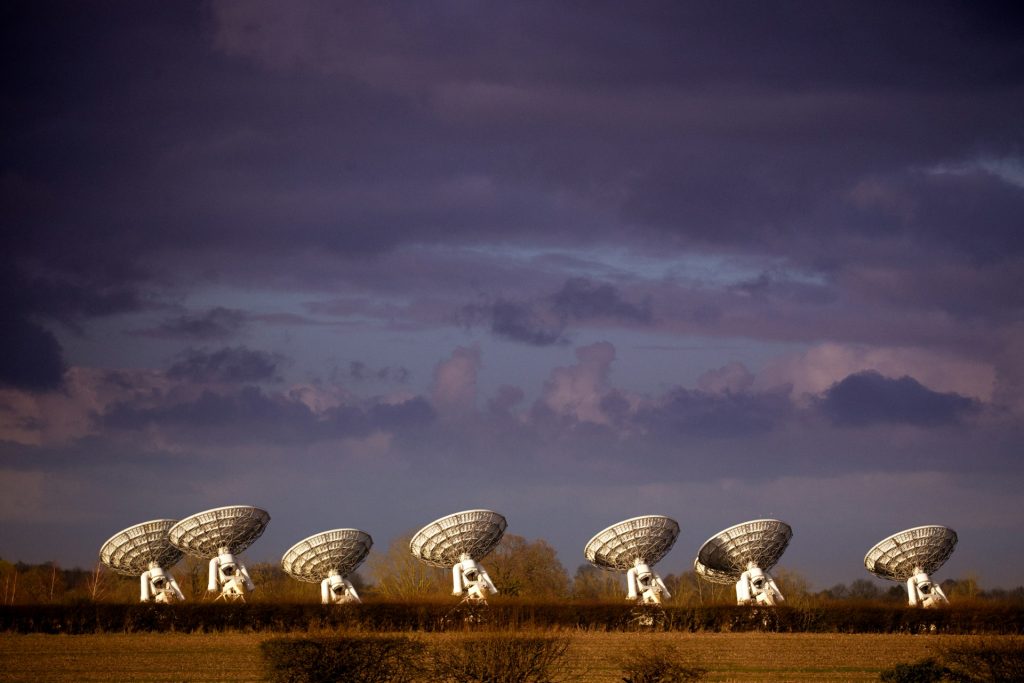The electromagnetic (EM) spectrum is an expansive realm encompassing various forms of energy radiation. From the familiar visible light in your living room to the radio waves carrying your favorite tunes, the spectrum extends far beyond what meets the eye. Let’s take a closer look at each segment of this invisible spectrum and discover where they sneak into our daily lives.

Radio Waves: More than Just Music
Your radio doesn’t just bring you the latest hits; it captures radio waves emitted by stations, stars, and even gases in space. This segment of the spectrum plays a significant role in our everyday entertainment and extends beyond our terrestrial boundaries.
Microwaves: Beyond Popcorn Popularity
While microwave radiation efficiently cooks your popcorn, astronomers utilize it to unravel the mysteries of nearby galaxies. This unassuming part of the spectrum unveils cosmic secrets while enhancing our culinary experiences.
Infrared: Night Vision and Cosmic Dust
Night vision goggles rely on infrared light emitted by warm objects, including our skin. In space, infrared helps astronomers map the dust scattered between stars, expanding our understanding of the vast cosmic landscapes.
Visible Light: Eyes at Work
The light our eyes perceive falls within the visible spectrum. Whether it’s the flickering glow of fireflies, the steady hum of light bulbs, or the distant twinkle of stars, visible light shapes our visual experiences.
Ultraviolet: Sun-Kissed Skin and Cosmic Heat
Ultraviolet radiation, emitted by the sun, is responsible for both tans and burns. Beyond Earth, “hot” celestial objects contribute to the ultraviolet spectrum, revealing the energetic side of the universe.
X-rays: Imaging Beyond Teeth
X-rays, commonly used by dentists for teeth imaging and airport security for bag inspection, also expose the hot gases in the universe. This segment allows us to see through both earthly and cosmic barriers.
Gamma Rays: Peering into the Universe’s Depths
Doctors deploy gamma-ray imaging to delve into the human body, but the universe itself serves as the grandest gamma-ray generator. This high-energy segment unravels the most profound mysteries concealed in the vast expanse of space.

Unified Essence of Radiation
Are radio waves fundamentally different from gamma rays? Despite differences in production and detection processes, they share a common essence. All segments of the electromagnetic spectrum, including radio waves, gamma rays, and visible light, are forms of electromagnetic radiation.
Electromagnetic radiation is best described as a stream of mass-less particles called photons, each traversing in a wave-like pattern at the speed of light. The variety in these radiations arises from the energy contained within each photon. From low-energy radio waves to high-energy gamma rays, the spectrum unfolds a mesmerizing range of phenomena.
Measuring the Invisible
Expressing electromagnetic radiation involves three key parameters: energy, wavelength, and frequency. While scientists use these interchangeably, the choice depends on the specific characteristics of the radiation being studied.
Radio Waves and Beyond: Astronomers studying radio waves often employ wavelengths or frequencies. This vast segment of the spectrum spans from about 1 cm to 1 km, translating to 30 gigahertz (GHz) to 300 kilohertz (kHz) in frequencies.
Infrared and Optical Precision: Infrared astronomers opt for microns (millionths of a meter), covering wavelengths from 1 to 100 microns. Optical astronomers navigate between angstroms and nanometers, unraveling the visible light spectrum between 400 and 700 nanometers.
Ultraviolet, X-ray, and Gamma-ray Energies: In the high-energy realms, scientists focus on electron volts (eV). Ultraviolet radiation spans from a few electron volts to about 100 eV, while X-ray photons boast energies from 100 eV to 100,000 eV (or 100 keV). Gamma-rays surpass the 100 keV threshold.
Why Telescopes Orbit the Earth
The majority of electromagnetic radiation from space struggles to pierce Earth’s atmosphere. While radio frequencies, visible light, and some ultraviolet light manage to reach the surface, the rest remains elusive. To overcome this limitation, astronomers strategically position telescopes.
Earth-Bound Observations: Radio frequencies and visible light can be observed from the Earth’s surface.
Mountaintop Insights: Infrared observations find their way to astronomers when telescopes are perched atop mountains.
Balloon Endeavors: Scientific balloons, reaching heights of 35 km, enable months-long experiments.
Rocket Flights: For a brief but critical few minutes, rocket flights elevate instruments above Earth’s atmosphere, allowing scientists to capture elusive data before descent.

In essence, our exploration of the electromagnetic spectrum underscores its omnipresence in our daily lives and the ingenious measures astronomers take to unlock the secrets it holds, both on Earth and beyond our celestial boundaries.





